We asked Jane Arthur, co-founder of The Sapling and co-owner/manager of GOOD BOOKS, to sell us the junior fiction finalists, and if you haven’t already read them you’ll be running to bookshops and libraries to add them to your and your children’s reading piles.
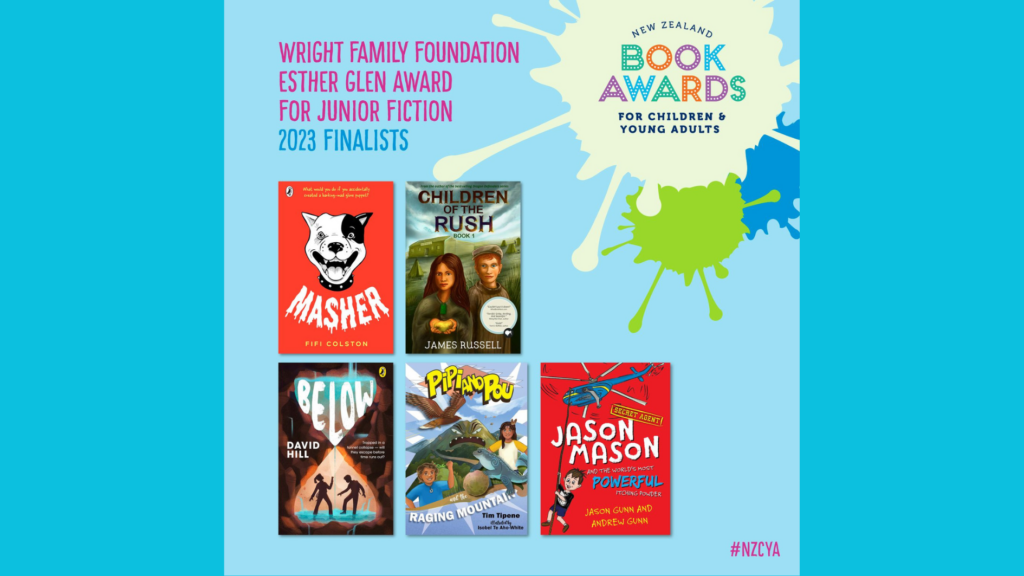
I’ve been asked to write a summary of this year’s finalists in the Wright Family Foundation Esther Glen Award for junior fiction from a bookseller’s perspective, which I’m happy to do, but I implore you to keep in mind that bookselling is a strange and mystical mix of experience, data, magic, and timing. Every day, things happen like: we’re about to recommend a book to a customer and right as we are about to apologise for the ugly cover design, the customer will say, “Oh, what a gorgeous cover!” Or a customer will say they’re looking for a historical novel set in France or failing that, a non-fiction book about radium, and they’ll walk out with the latest Lee Child.
So with my Expert Bookseller Hat on, I read the five shortlisted titles and as I read, I kept careful notes about precisely what sort of readers these books will suit and why, which are summarised below, and I will be both completely right and completely wrong because that is the magic of books finding their readers—sometimes what you need is exactly what you didn’t know you wanted, and sometimes what you like is something you never knew you would.
GENERAL OBSERVATIONS
It seems the judges have truly thought to themselves here, “Won’t somebody think of the children?!” and taken it upon themselves to answer that call by choosing five books that children will absolutely, genuinely, freakin’, blinkin’ love.
Instead of thinking about what children might need, according to boring adults (earnest, eat-your-veggies stuff), the judges have found what children want: these are rollicking, entertainment-first finalists—though they have deeper themes, too (so, okay, there are some hidden veggies, after all).
What they have in common is energy, whether it’s in the form of humour or action. There are no ponderous, character-driven novels on the list, which is where my own taste usually steers me, but I enjoyed all five novels all the same, because that’s the power of a good book.
It also struck me that of the five books, only one is written by a woman (hi Fifi!) and four are written by men, which is a very non-typical ratio for books written for children in this country recently. I don’t want to draw any conclusions about this—I don’t think it means anything, really—but it was cool to note that there are (still) men writing quality books for children. I also found it interesting that three of the five books are the first in new series, meaning there are more books planned and publishers have clearly made a commitment to young readers, which is great.
LET ME HAND-SELL YOU EACH BOOK
Children of the Rush: Book 1, by James Russell (Dragon Brother Books)
Who would I recommend this book to?
I’d suggest this novel to quiet, sensitive kids of any gender, those who might be interested in history, and especially those who like stories about good versus evil, where the underdog wins. The back cover says “dyslexic-friendly typeface”, which is useful to know for readers with dyslexia. I’d also say that kids absolutely love James Russell’s books and just last week we had a mum come in desperate for the second book in this series (not yet out) as her kids—a boy and a girl—loved this one so much.
What is the book about?
Children of the Rush is set during the 1861 Otago gold rush. It has alternate chapters from the point of view of Michael, a 12-year-old Pākehā boy, and Atarangi, a Māori girl. Both children have supernatural powers they keep to themselves until they meet each other and feel safe to share them: Michael can see auras, meaning he can see someone’s true nature or mood, and Atarangi can sense gold underground. Both children are facing hard times: Michael’s mother died of typhoid fever ten days before the book opens, and Atarangi’s father drowned in a river where he was working as a guide for miners, and their surviving parents do what they can to provide. It’s an interesting introduction to the history of the gold rush, filled in with archetypal baddies, with the children doing the work of good quietly, without wanting thanks, which is quite a lovely—though simplified—message. James Russell is probably the hardest-working, most savvy self-published writer of children’s novels we have in this country, and he’s getting better and better.
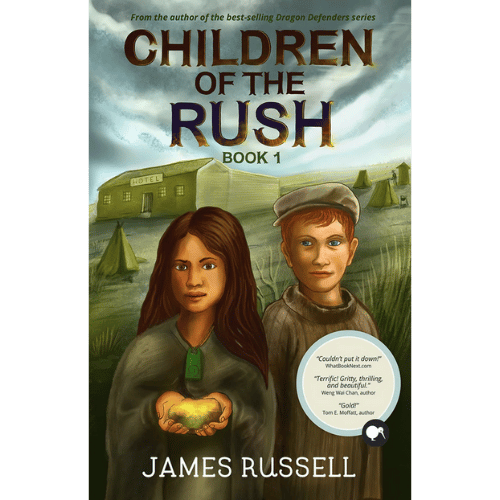
Pipi and Pou and the Raging Mountain, by Tim Tipene and illustrated by Isobel Te Aho-White (OneTree House)
Who would I recommend this book to?
This is the book that’s aimed at the youngest readership out of all the finalist books, so holds a lucky spot if you’ve got seven-to-nine-year-olds to buy for. I’d also recommend it if you want a great read-aloud for that age group, including if you’re a classroom teacher and especially if you’re a skilled and funny storyteller. I’d also have pleasure recommending it to Māori kids, as te ao and te reo Māori are strongly present throughout the book, though it’s mostly written in English. There are a few line drawings by the awesome Isobel Te Aho-White. I could also tempt the buyer/reader with the promise of more to come, as this is the first in a new series, too.
What is the book about?
Nana looks after her two moko, cousins Pipi—a girl who can turn into a pouākai, a giant eagle—and Pou—a boy who can turn into a taniwha. All three are superheroes of a sort; kaitiaki of the natural world. In this adventure, they travel deep into a ngahere—even riding on the backs of secretly not-extinct moa—to find the source of deep rumblings shaking the earth. It turns out not to be earthquakes, but a mountain that’s unhappy about being trampled on disrespectfully by humans. The environmental message gets through to the reader loud and clear (and unsubtly), the cousins bicker humorously even in their superhero form, and the story gallops along. It’s a cool idea and nice to see it on the shortlist.
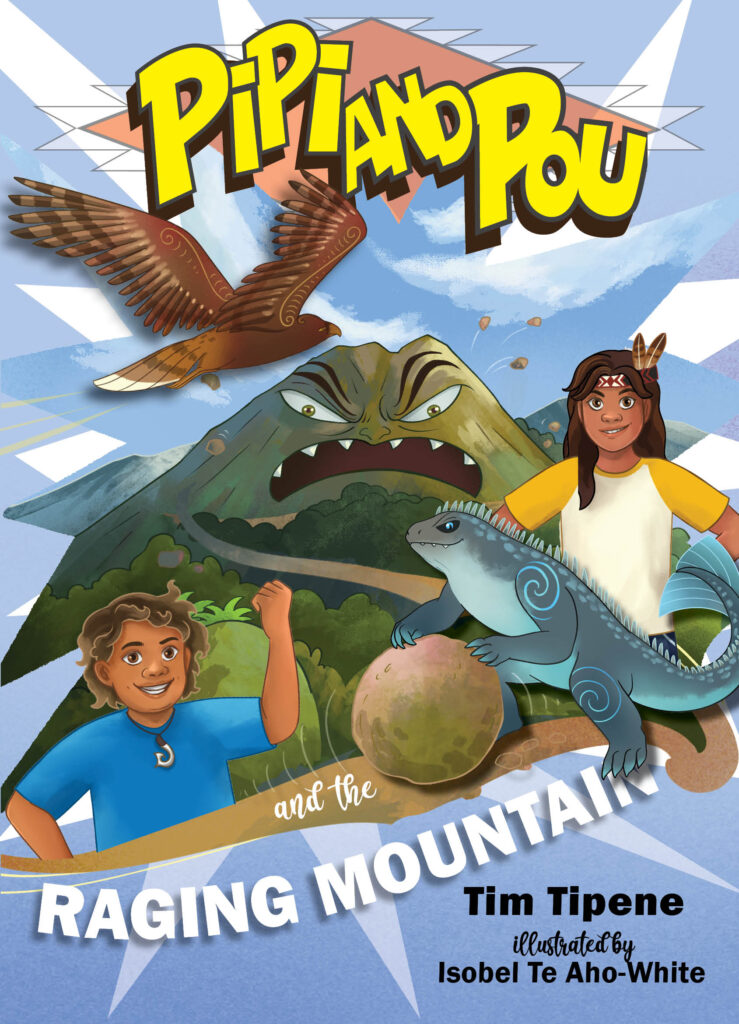
Pipi and Pou and the Raging Mountain
By Tim Tipene
Illustrated by Isobel Joy Te Aho-White
Published by OneTree House
RRP: $22
Jason Mason and the World’s Most Powerful Itching Powder, by Jason Gunn and Andrew Gunn (Bateman Books)
Who would I recommend this book to?
I’d recommend this book wholeheartedly to any seven-to-11-year-olds wanting a funny book to read. Which is just about all of them—I can never order enough funny books for the kids’ section at the shop, apparently. It works terrifically as a read-aloud, as I read the first few chapters to my five-year-old (they were way above his head, so I’d wait two or three years). If you have a child who’s moved on from Captain Underpants, likes books about zany capers or main characters who are misunderstood in life and school, you will not go wrong here. Brilliant stuff, with genuine literary substance.
What is the book about?
Firstly, yes, one of the authors is Jason Gunn, as in Son of a Gunn, which millennial and Gen X parents will remember from the dark ages of their childhoods and yes, I was highly prejudiced and dubious going in, I admit it. But, by crikey, I loved this book! What I most liked is that it has such a strong voice. Eleven-year-old Jason Mason, the narrator, is average—he’s not very smart, he’s clumsy, doesn’t really have friends, and isn’t particularly charming—but boy, can he spin a yarn. The way the story is structured is truly clever—it winks at the reader, and elbows us in the ribs, and strings us along and then says, SEE, TOLD YA! and somehow it works. The pacing is spot-on, the antics pay off, and the jokes are incredibly silly but still somehow fresh (the baddie’s name is Hugh Jarse, hahahahahahahaha).
Anyway, Jason Mason’s great-uncle dies and after a series of ridiculous events, Jason ends up becoming a secret agent working for the NZ government and helping save an important rugby game from a terrible plot to unleash itching powder. It’s so silly, and really compelling, and somehow…smart! There’s a lesson about Icarus! Could have knocked me down with a feather.
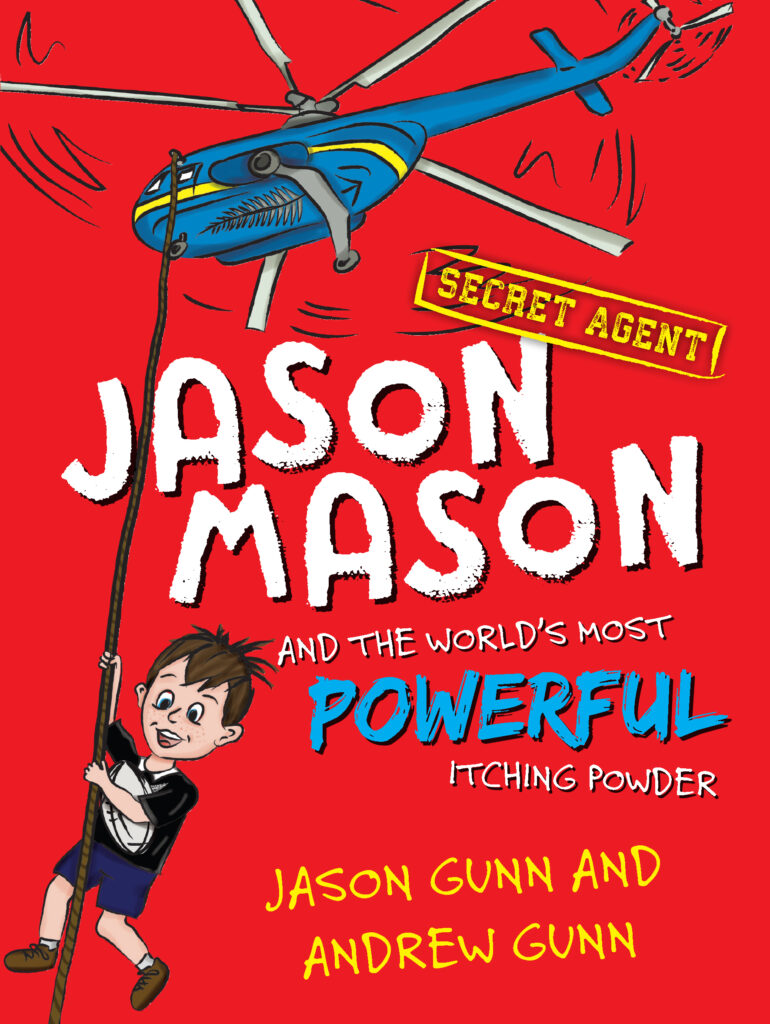
Jason Mason and the World’s Most Powerful Itching Powder
By Jason Gunn & Andrew Gunn
Published by Bateman Books
RRP: $19.99
Masher, by Fifi Colston (Penguin Random House NZ)
Who would I recommend this book to?
Masher would suit possibly the widest range of readership of all the books, because it’s an easy read but not patronising, a little weird but not too scary, the characters are likeable and appealing to all genders, there are mysteries to solve, enough realism to ground it, enough funny, mad-cap capers to appeal to non-readers, you could safely give it to strong readers younger than the age of the main protagonist (12 years), and at the same time, 12-year-olds will feel cool being seen with it because check out that cover!
What is the book about?
The plot of Masher is absolutely bananas to try to summarise. The fun of it is really just being in it for the ride, so I won’t go into huge detail. Basically, 12-year-old Freddie is a loner, slightly nerdy and goofy, but also resourceful. He loves arts and crafts, accidentally kills his neighbour’s dog (or does he?) and then…manages to make himself a new best friend: a possessed, talking, papier-mâché dog puppet! There are some nice, realistic portrayals of family dynamics, some outlandish antics, some lightweight comic-horror elements, and a whole lot of fun from beginning to end.
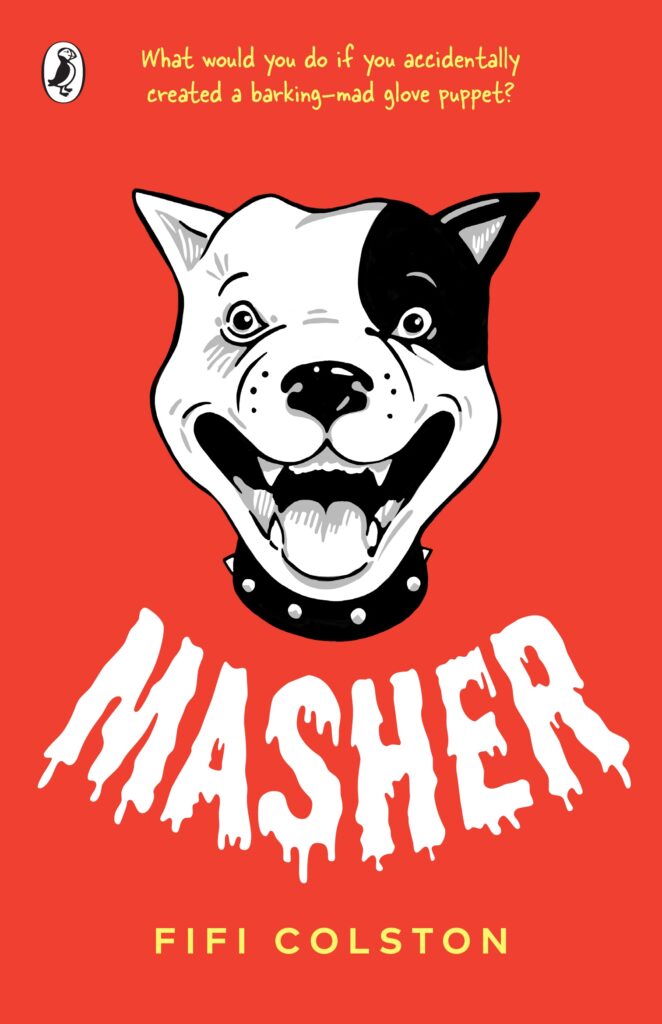
Below, by David Hill (Penguin Random House NZ)
Who would I recommend this book to?
It’s interesting this is in the junior fiction category and not the teen category, because I could recommend it to readers up to age 14 or 15, easily. The characters feel like they’re in early high school, and I didn’t notice their ages get mentioned, which is smart because we can get away with recommending this to a wider range of readers. I’d say probably over the age of 11, though, as it’s pretty intense. This is a book to give to readers wanting something gripping and exciting, even those teens who resist reading—it grips from the outset, and has short chapters that compel you to keep reading. I couldn’t put it down. It’s an adventure story, with ecological themes that are really nuanced.
What is the book about?
Oh my goodness. It is about one of my worst claustrophobic nightmares—getting trapped in a collapsed tunnel—so I was nervous about reading it. But it is so, so good. The pacing of the entire novel is a masterclass by a writer who’s been doing this for decades, and it’s so cool to see he’s still got it.
Liam and Imogen hate each other, partly because Liam’s father is an engineer on a new tunnel that’s getting drilled through the local mountain, and Imogen is part of a family of protesting environmentalists. They both think the other side is flat wrong. Then they agree to secretly meet in the tunnel so Liam can show Imogen all the environmental considerations in place—though she has her own reasons for wanting to meet…And then the tunnel collapses, and nobody knows they’re inside. Holy smokes, it is so scary. It was almost too much for me, but I reckon kids are tougher and could handle reading this (also, and this isn’t exactly a spoiler, but I knew that because it’s a kids’ book, it would have a happy ending, so I had to keep reading to get to the end).
The tension doesn’t let up, even while showing moments of boredom and fatigue. There’s brilliant, realistic character development between Liam and Imogen, two children who don’t like each other and are then trapped together and forced to survive while realising they don’t even know each other. Their relationship shifts in a beautiful, realistic way that doesn’t feel forced or unlikely; I liked the moments of awkwardness that remained, even in survival mode. This novel is absolute top stuff, and while I enjoyed all the others, this is the one for me. Just thinking about it gets my adrenaline pumping.
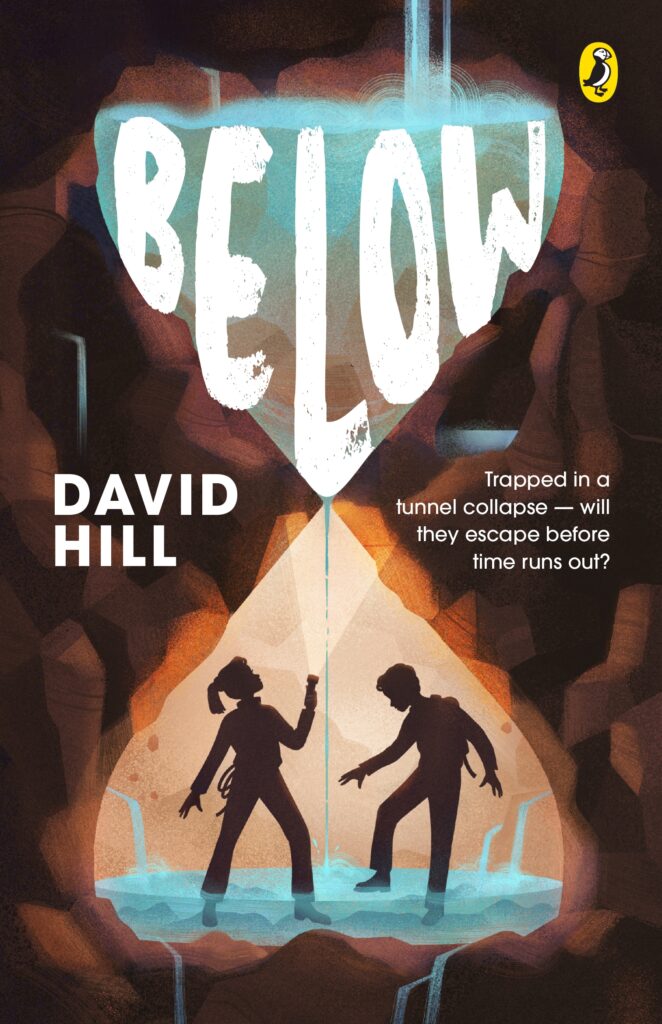

Jane Arthur
Jane Arthur co-owns and manages GOOD BOOKS, a small independent bookshop in Pōneke Wellington. She twice judged the NZ Book Awards for Children and Young Adults, in 2019 and 2020. Her debut poetry collection, Craven (VUP) won the Jessie Mackay Prize for best first book of poetry at the 2020 Ockham NZ Book Awards, and her second collection, Calamities!(THWUP) was longlisted for the Mary and Peter Biggs Award for Poetry in the 2024 Ockham Awards. Her debut children's book, Brown Bird(PRH) is due for release in May 2024. Jane is also co-founder of The Sapling.



